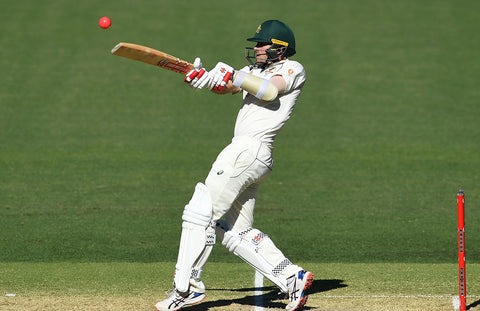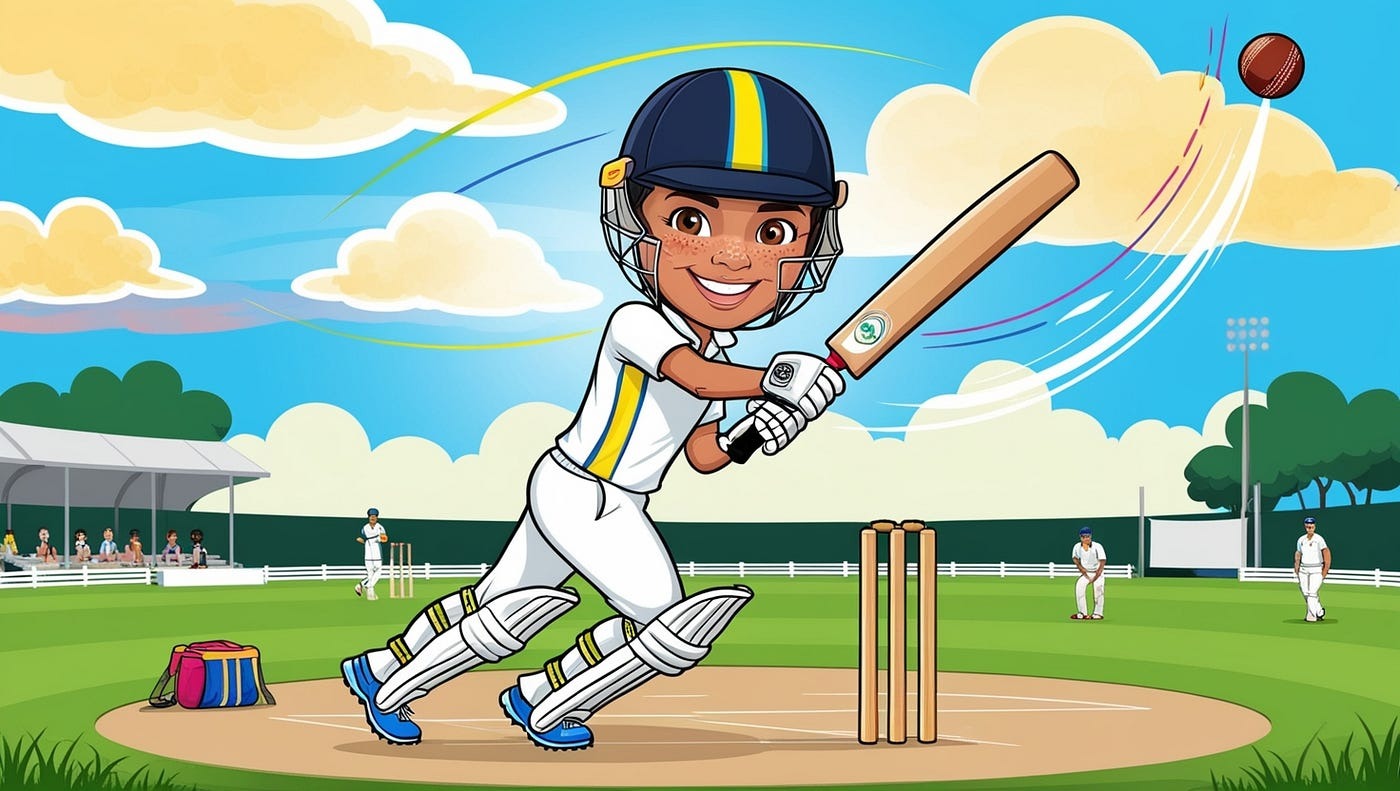Cricket is a game where peak physical fitness isn’t just an advantage; it’s a necessity for consistent performance and injury prevention. Many aspiring cricketers focus solely on refining their batting, bowling, or fielding skills, sometimes overlooking the crucial role that a well-rounded fitness regimen plays.
But superior fitness is the unsung hero of cricket success, transforming good players into great ones. It makes you faster, stronger, more resilient, and sharper under pressure. This article is your simple guide to understanding the key fitness components for cricket and provides the top, easy-to-understand drills you can incorporate into your training. Get ready to elevate your game, prevent injuries, and unlock your full potential on the pitch by enhancing your cricket performance through targeted fitness!
Why Fitness is Your Best Teammate in Cricket (Beyond Skill)
Cricket might look like a leisurely sport at times, but it places unique and demanding stresses on a player’s body. The game’s stop-start nature, combined with moments of intense physical output, requires a blend of different fitness qualities:
- Demands of Cricket:
- Explosive Movements: Sprinting between wickets, jumping for catches, powerful swings of the bat, dynamic bowling actions.
- Agility & Quickness: Changing direction rapidly while fielding, reacting instantly to the ball.
- Sustained Concentration: Long periods on the field, batting for hours, maintaining focus during bowling spells.
- Repetitive Actions: Hundreds of bowling actions, batting swings, throws.
- Heat & Endurance: Playing in long formats or hot conditions for extended periods.
- Benefits of Good Fitness:
- Enhanced Performance: Stronger muscles mean more powerful shots (batting), faster bowling speeds, and more accurate throws (fielding). Better agility leads to sharper catches and quicker runs.
- Injury Prevention: Strong core muscles, flexible joints, and resilient tendons reduce the risk of common cricket injuries like hamstrings strains, shoulder issues, and back pain.
- Increased Stamina: You’ll maintain high levels of performance throughout an innings, a long bowling spell, or an entire match, reducing fatigue-related errors.
- Better Decision-Making: When your body is less fatigued, your mind stays sharper, allowing for clearer tactical decisions under pressure.
- Faster Recovery: A fit body recovers more quickly between balls, between overs, and between matches, ensuring you’re ready for the next challenge.
In essence, fitness is the engine that powers your cricket skills. It allows you to perform your techniques repeatedly, effectively, and safely.
Key Fitness Components for Cricketers (Simplified)
To develop a well-rounded cricket fitness plan, we’ll focus on these main components:
- Strength: The ability of your muscles to produce force (for powerful hits, fast bowling, strong throws).
- Speed & Agility: The ability to move quickly and change direction rapidly (for running between wickets, chasing the ball, quick reactions).
- Endurance: The ability to sustain physical effort over time (for long batting innings, bowling spells, fielding throughout the day).
- Flexibility & Mobility: The range of motion in your joints and muscles (for injury prevention, efficient technique).
- Core Strength: The stability of your torso, crucial for transferring power in batting, bowling, and providing a stable base for fielding.
Top Fitness Drills for Cricket Performance
Here are some effective drills, easy to understand and integrate into your training, that target these key cricket fitness components. Remember to warm up before and cool down after your workouts.
1. Shuttle Runs (Agility & Speed)
- What it targets: Explosive speed, rapid change of direction, short-burst endurance.
- How to do it: Mark out two lines 10-20 meters apart. Sprint from the start line to the end line, touch the line with your hand/foot, and sprint back to the start. Repeat this continuously.
- Why it’s important: Mimics quick singles between wickets, explosive fielding movements, and rapid changes of direction needed to chase the ball.
- Beginner Tip: Start with 3-4 sets of 4-6 shuttles (down and back counts as one shuttle). Focus on fast, controlled turns at each line.
2. Bodyweight Squats & Lunges (Strength & Leg Power)
- What it targets: Lower body strength, power for batting drives, bowling push-off, and jumping.
- How to do it:
- Squats: Stand with feet shoulder-width apart. Lower your hips as if sitting in a chair, keeping your chest up and back straight. Go as low as comfortable, then push through your heels to stand back up.
- Lunges: Step one leg forward, lowering your hips until both knees are bent at about 90 degrees. Push back up and alternate legs.
- Why it’s important: Strong legs are fundamental for power generation in almost all cricket actions – driving the ball, pushing off in bowling, jumping for catches, and sustained running.
- Beginner Tip: Start with 3 sets of 10-15 repetitions for both squats and lunges. Focus on slow, controlled movements and good form before adding speed or more reps.
3. Plank (Core Strength)
- What it targets: Core stability, endurance of abdominal and back muscles.
- How to do it: Start on your forearms and toes, forming a straight line from your head to your heels. Keep your core tight, glutes squeezed, and avoid letting your hips sag or push too high.
- Why it’s important: A strong core provides a stable base for all cricket movements – crucial for transferring power from your legs to your bat, for maintaining balance during your bowling action, and for stability in fielding and throwing.
- Beginner Tip: Start by holding for 20-30 seconds. Build up to 60 seconds per hold for 3-4 sets. If a full plank is too hard, drop to your knees while maintaining a straight line from head to knees.
4. Burpees (Full Body Power & Stamina)
- What it targets: Full-body explosive power, cardiovascular endurance, muscular endurance.
- How to do it: Start standing. Squat down and place hands on the floor. Kick your feet back into a plank position. (Optional: perform a push-up). Jump feet back to hands. Stand up explosively, jumping and reaching hands overhead.
- Why it’s important: This drill is a fantastic all-rounder. It mimics the explosive power needed for batting and fielding, and rapidly increases your heart rate for stamina.
- Beginner Tip: For a “Modified Burpee,” skip the jump at the end and the push-up. Instead of kicking feet back, step one foot back, then the other, into plank, then step feet back to hands, and stand up.
5. High Knees & Butt Kicks (Speed & Dynamic Warm-up)
- What it targets: Leg speed, quick footwork, cardiovascular warm-up.
- How to do it:
- High Knees: Run in place, driving your knees up towards your chest as high as comfortable. Pump your arms.
- Butt Kicks: Run in place, kicking your heels up towards your glutes.
- Why it’s important: These drills improve leg speed and agility for quick runs between wickets, fast fielding reactions, and dynamic movements in bowling. They’re also great for a dynamic warm-up.
- Beginner Tip: Start by doing these slowly and with control, focusing on form. Aim for 30-45 seconds for each drill, rest, and repeat for 3-4 sets.
6. Box Jumps (or Step-Ups) (Explosive Power)
- What it targets: Explosive leg power, jumping ability for catches, pushing off in bowling.
- How to do it: Use a sturdy low box, bench, or even a sturdy low step.
- Box Jump: Stand facing the box. Swing your arms and jump onto the box, landing softly. Step or jump back down.
- Step-Up: Simply step up onto the box, bringing both feet up, then step back down, alternating leading legs.
- Why it’s important: Develops the explosive leg power needed for jumping catches, accelerating in a sprint, and generating force in your bowling action.
- Beginner Tip: Start with Step-Ups first to build strength and confidence. Choose a low, stable surface. Focus on controlled movements before trying to jump. Perform 3 sets of 8-12 repetitions per leg.
7. Overhead Throws (Medicine Ball or Light Ball) (Throwing Power)
- What it targets: Upper body strength, core power, and throwing velocity.
- How to do it: Use a light medicine ball (1-3kg) or even a heavier cricket ball. Stand with feet shoulder-width apart, holding the ball with both hands overhead. Engage your core and throw the ball forward, either overhead or with a slight rotation, as far as you can.
- Why it’s important: Improves the power and range of your throws, crucial for fielding and returning the ball quickly from the boundary.
- Beginner Tip: Focus on engaging your core and throwing smoothly, rather than just using arm strength. Perform 3 sets of 8-10 throws.
Building Your Cricket Fitness Routine
Integrating these drills into a routine will maximize your benefits:
- Frequency: Aim for 3-4 fitness sessions per week on days when you don’t have heavy skill training or matches. If you train regularly, incorporate 1-2 of these drills into your warm-up or cool-down.
- Warm-up (5-10 minutes): Always start with light cardio (jogging in place, dynamic stretches like arm circles and leg swings) to prepare your body.
- Main Workout: Choose 3-4 drills from the list. Perform 3-4 sets of each drill, resting for 60-90 seconds between sets.
- Cool-down (5-10 minutes): Finish with gentle static stretches (holding each stretch for 20-30 seconds) to improve flexibility and aid recovery.
- Listen to Your Body: Don’t push through sharp pain. Take rest days when needed.
- Consistency is Key: Regular effort, even if it’s shorter sessions, is far more beneficial than infrequent, intense workouts.
- Progressive Overload: As you get fitter, gradually increase the challenge: do more repetitions, add more sets, reduce rest time, or try harder variations of the drills.
Conclusion: Your Pathway to Peak Cricket Performance
Cricket performance isn’t just about bat swings or bowling actions; it hinges on specific fitness attributes that allow you to execute those skills effectively, consistently, and safely. By incorporating these top fitness drills into your training regimen, you’ll enhance your strength, speed, agility, and endurance, laying a robust foundation for your cricketing journey.
Investing in your physical fitness is investing in your full potential on the pitch. It will lead to more powerful shots, faster runs, sharper fielding, and greater stamina throughout the game, all while significantly reducing your risk of injury.





Leave a Reply